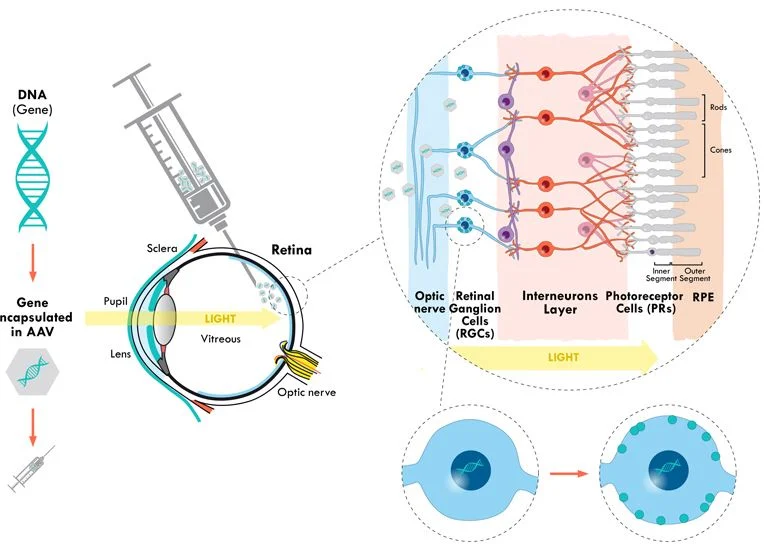In a groundbreaking development, a patient suffering from Leber congenital amaurosis (LCA), a rare genetic disorder causing blindness, has experienced a remarkable restoration of vision following a single injection of an experimental RNA therapy. Researchers at the University of Pennsylvania have reported this groundbreaking case, shedding light on a potential treatment strategy for various eye diseases that have long eluded effective solutions.
LCA is a devastating condition characterized by mutations in various genes, leading to impaired photoreceptor function. Photoreceptors are the cells responsible for converting light into electrical signals, and when they malfunction, severe visual impairment occurs from birth or early childhood. Until now, there has been no cure for LCA.
In this case, the patient possessed a mutation in the CEP290 gene, a known culprit behind LCA. This genetic anomaly results in the production of a defective protein that disrupts the structure and function of the photoreceptors’ cilia, tiny hair-like projections crucial for light sensing.
The groundbreaking approach employed by researchers is known as antisense oligonucleotide therapy. This technique uses synthetic RNA molecules, called antisense oligonucleotides, to target and modify specific RNA sequences, thus altering their expression. In the case of this study, an antisense oligonucleotide named “sepofarsen” was designed to boost the production of normal CEP290 protein within the photoreceptors, effectively restoring the function of their cilia.
In an international clinical trial led by Penn Medicine researchers, the patient received a single injection of sepofarsen directly into the eye. Remarkably, this treatment was well-tolerated and had no adverse effects. Within a month, the patient’s vision showed significant improvement, reaching its peak effect after three months. Astonishingly, this improvement persisted for over 15 months, the duration of the follow-up period.

Researchers employed a battery of tests to measure the patient’s vision, including assessments of visual acuity, visual field, night vision, and retinal structure. These tests revealed a notable increase in the quantity and quality of light detected by the photoreceptors, improved image clarity and contrast, an expanded range of vision, and enhanced ability to see in dim light. Additionally, marked changes were observed in the fovea, the central region of the retina responsible for sharp and detailed vision.
What makes this case particularly intriguing is the patient’s decision to forgo the quarterly maintenance doses offered as part of the trial, opting for only one injection of sepofarsen. Comparisons with 10 other patients who received multiple injections of sepofarsen yielded similar levels of improvement, suggesting that, in some cases, a single injection may suffice for lasting effects.
One noteworthy finding from the study was that the onset of improvement was slower than anticipated. This suggests that the process of restoring cilia function is intricate and time-consuming, potentially holding implications for the treatment of other diseases affecting cilia function in the retina or other organs.
Published in Nature Medicine, this study marks the first instance of antisense oligonucleotide therapy successfully reversing a genetic form of blindness with lasting effects following a single injection. The therapy is currently undergoing further clinical trials to assess its safety and efficacy in larger patient groups.
Antisense oligonucleotide therapy presents a promising strategy for addressing various eye diseases arising from mutations in RNA or protein expression. It offers several advantages over alternative approaches, such as gene therapy or gene editing, due to its specificity, flexibility, reversibility, and minimally invasive nature. Moreover, it holds the potential to benefit a broader range of patients with diverse mutation types or combinations.
The researchers behind this groundbreaking study are optimistic that their discovery will pave the way for the development of new treatments not only for LCA but also for other blinding conditions affecting millions of people worldwide. They hope their work will inspire further research into harnessing the potential of RNA molecules to modulate gene expression and combat a wide array of diseases.
Resources:
1.https://bigthink.com/health/antisense-oligonucleotides-treat-genetic-blindness/
3.https://www.freethink.com/health/antisense-oligonucleotide-therapy